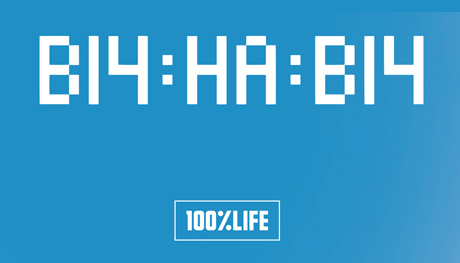UNAIDS Board adopts new global AIDS strategy which paves the way to end AIDS by 2030
The new Global AIDS Strategy 2021–2026, End Inequalities, End AIDS, is a bold approach that uses an inequalities lens to close the gaps preventing progress to end AIDS
GENEVA, 25 March 2021—The UNAIDS Programme Coordinating Board (PCB) has adopted by consensus a new Global AIDS Strategy 2021–2026 to get every country and every community on track to end AIDS as a public health threat by 2030. The strategy was adopted by the PCB during a special session, chaired by the Minister of Health of Namibia, held on 24 and 25 March 2021.
The Global AIDS Strategy 2021–2026, End Inequalities, End AIDS, uses an inequalities lens to close the gaps preventing progress to end AIDS and sets out bold new targets and polices to be reached by 2025 to propel new energy and commitment to ending AIDS. The UNAIDS Secretariat and its 11 Cosponsors worked to develop the new strategy, which received inputs from more than 10 000 stakeholders from 160 countries.
“This year marks 40 years since the first cases of AIDS were reported and 25 years since the establishment of UNAIDS. We are at a critical moment in our historic effort to end AIDS,” said Winnie Byanyima, Executive Director of UNAIDS. “Like HIV before it, COVID-19 has shown that inequality kills. COVID-19 has widened existing inequalities that block progress to ending AIDS. That’s why I’m proud that our new strategy places tackling inequalities at its heart. We must seize this moment to ensure health equality for all in order to beat COVID-19 and end AIDS.”
The strategy puts people at the centre and aims to unite all countries, communities and partners across and beyond the HIV response to take prioritized action to transform health and life outcomes for people living with and affected by HIV. The three strategic priorities are to: (1) maximize equitable and equal access to comprehensive people-centred HIV services; (2) break down legal and societal barriers to achieving HIV outcomes; and (3) fully resource and sustain HIV responses and integrate them into systems for health, social protection and humanitarian settings.
“The World Health Organization is pleased to endorse the global AIDS strategy for the next five years, with its ambitious vision for ending gender inequalities and realizing human rights, including the right to health, calling upon all partners and stakeholders in the HIV response in every country to transform unequal gender norms and end stigma and discrimination,” said Tedros Adhanom Ghebreyesus, Director-General of the World Health Organization and chair of the UNAIDS Committee of Cosponsoring Organizations. “For this strategy to be fully realized, WHO will continue to support all countries to strengthen health systems and especially primary health care, on the road towards universal health coverage.”
If the targets and commitments in the strategy are achieved, the number of people who newly acquire HIV will decrease from 1.7 million in 2019 to less than 370 000 by 2025 and the number of people dying from AIDS-related illnesses will decrease from 690 000 in 2019 to less than 250 000 in 2025. The goal of eliminating new HIV infections among children will see the number of new HIV infections drop from 150 000 in 2019 to less than 22 000 in 2025.
“I applaud the joint efforts in the global AIDS response. At this critical point in efforts to end AIDS as a global health threat by 2030, I call on all countries to support this strategy to get the global AIDS response back on track,” said Kalumbi Shangula, Minister of Health of Namibia and PCB Chair.
HIV prevention for key and priority populations receives unprecedented urgency and focus in the strategy, which calls on countries to utilize the full potential of HIV prevention tools, especially for adolescent girls and young women in sub-Saharan Africa, sex workers, people who inject drugs, gay men and other men who have sex with men, transgender people and people in prison settings.
“The Global Network of People Living with HIV (GNP+) fully supports the Global AIDS Strategy 2021–2026. The strategy’s life-saving framework for ending inequalities is fundamental to ending the AIDS epidemic and achieving the Sustainable Development Goals,” said Alexandra Volgina, Program Manager, GNP+.
The strategy is based on human rights, gender equality and dignity, free from stigma and discrimination for all people living with and affected by HIV, and is the result of extensive analysis of HIV data and an inclusive process of consultation with countries, communities and partners.
Achieving the goals and targets of the new strategy will require annual HIV investments in low- and middle-income countries to rise to a peak of US$ 29 billion by 2025. The total resource needs for lower-income- and lower-middle-income countries is around US$ 13.7 billion. Donor resources are mainly needed for low-income and lower-middle-income countries, while in upper-middle-income countries, which account for 53% of the investments needed, domestic resources are the predominant source of funding.
For more information: End Inequalities. End AIDS. UNAIDS Global AIDS Strategy 2021-2026


